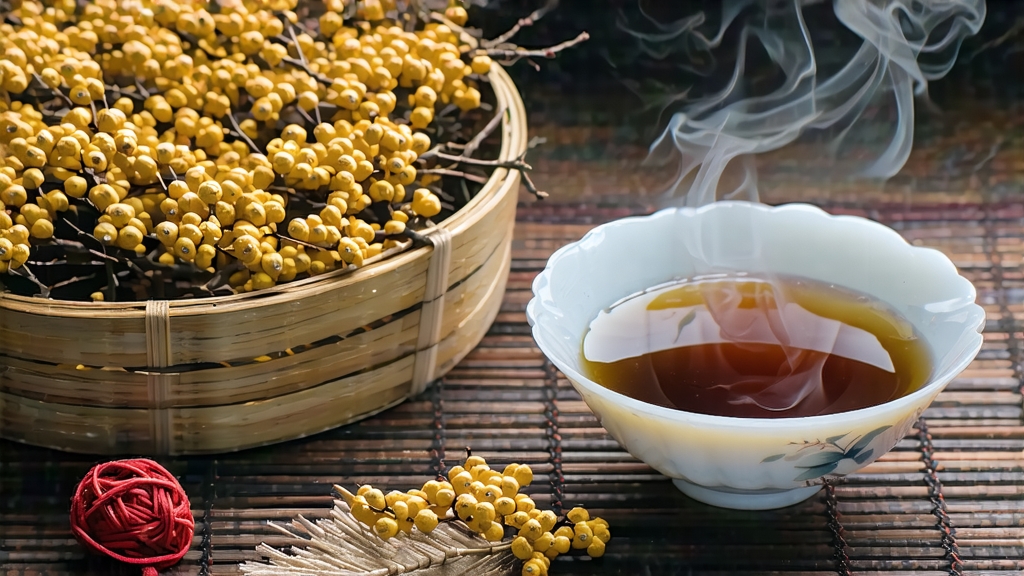
Hidden between the granite spires of the Dabie Mountains and the misty banks of the Pi-shui River, the small county of Huoshan in western Anhui has been guarding a tea secret for more than two millennia. Western catalogs usually list six major Chinese tea families, yet the rarest—yellow tea—remains a whispered footnote. Of its three surviving regional styles, Huoshan Huangya, literally “Huoshan Yellow Bud,” is the most luminous, once pressed into tribute cakes that traveled the Tang dynasty postal roads to Chang-an, later kissed by imperial lips during the Ming Hongwu era. Today fewer than 2 000 kg of authentic Huangya reach the market each spring, most still hand-wrought by descendants of the same nine families granted the imperial warrant in 1492. To understand why this tea commands prices higher than silver-grade Dragon-well and why its flavor seems to suspend time, one must step into the cool April dawn of Huoshan’s Jinji mountain hamlet.
History: from tribute to near extinction
The first written record appears in Wang Zhu’s 1102 “Treatise on Tea,” describing “a small-bud tea from Huoshan, wrapped in silk, whose liquor is the color of warm cinnabar.” By the Yuan dynasty the buds were steamed, pounded, and stamped into dragon-phoenix cakes, a practice that ended when the Hongwu emperor outlawed compressed tribute tea in 1391. Loose-leaf Huangya emerged, flourished through the Qing, then almost vanished during the 1937–45 war when the mountain trade route was severed. In 1972 a retired army officer named Chu Zhaohua rediscovered 38 ancient mother trees clinging to a cliff behind Zhenzhu temple; cuttings from those trees became the genetic reservoir for today’s micro-gardens, now protected by a geographical indication that forbids any leaf grown outside the 31 km² core zone.
Terroir: why the mountain smells of orchids
Huoshan lies at 31° N, 800–1 200 m above sea level, where the Dabie range funnels cool clouds across bamboo and oak forest. Mean spring temperature is 12 °C, slowing bud growth so that amino acids, especially L-theanine, accumulate to 4.8 % of dry weight—double that of neighboring green teas. The soil is Phyllite granite weathered into a sandy loam rich in ion-exchangeable potassium; drainage is so rapid that roots plunge two metres, pulling up trace cerium and rubidium that subtly broaden cup complexity. Finally, the mountain’s ubiquitous wild dendrobium orchids shed a wax that drifts onto tea leaves, adding a lactonic top note often mistaken for vanilla.
Harvest calendar: the three golden grades
Only the single bud or the bud-with-one-unopened-leaf is plucked during the 15-day window when night temperatures drop below 8 °C but days reach 18 °C. Grade One (“Bud Needle”) is 100 % buds, 1.8–2.1 cm long, silvery down still folded like a sleeping moth. Grade Two (“Small Yellow Slice”) keeps the tiny fish-leaf attached, giving a later inflection of grass. Grade Three (“Spring Waist”) includes the second true leaf, adding a tannic spine suited to long aftertaste. Picking starts at 05:30 when dew is half-evaporated; by 09:00 the baskets must reach the village workshop, for beyond that hour enzymatic oxidation races ahead of the tea master’s control.
Craft: the secret menhuang—“sealed yellowing”
Western texts often repeat the simplistic line that yellow tea is “green tea with an extra smothering step.” In reality menhuang is a choreography of moisture, temperature, and leaf-to-leaf chemistry that takes 72–96 hours and decides whether the tea becomes celestial or merely flat. The sequence:
- 80 °C wok kill-green for 3.5 minutes, just enough to denature polyphenol oxidase while preserving 15 % residual moisture.
- Initial rolling on a bamboo tray for 8 minutes; the cell rupture must stay below 28 % to avoid premature browning.
- First menhuang: leaves are piled 4 cm deep inside a fir-wood box lined with wet calico, then slid into a 35 °C, 78 % RH room for